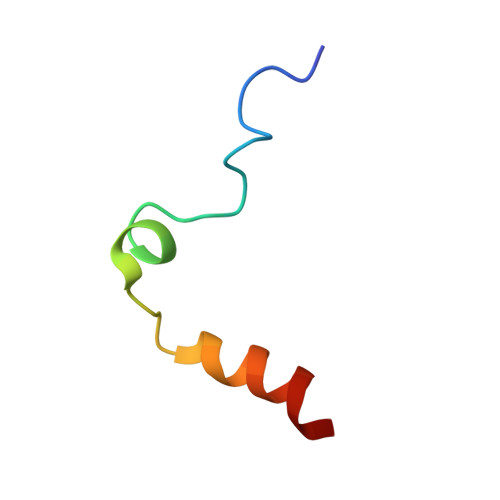Important role of the cys-191 cys-220 disulfide bond in thrombin function and allostery
Bush-Pelc, L.A., Marino, F., Chen, Z., Pineda, A.O., Mathews, F.S., Di Cera, E.(2007) J Biol Chem 282: 27165-27170
- PubMed: 17636263
- DOI: https://doi.org/10.1074/jbc.M703202200
- Primary Citation of Related Structures:
2PGB, 2PGQ - PubMed Abstract:
Little is known on the role of disulfide bonds in the catalytic domain of serine proteases. The Cys-191-Cys-220 disulfide bond is located between the 190 strand leading to the oxyanion hole and the 220-loop that contributes to the architecture of the primary specificity pocket and the Na+ binding site in allosteric proteases. Removal of this bond in thrombin produces an approximately 100-fold loss of activity toward several chromogenic and natural substrates carrying Arg or Lys at P1. Na+ activation is compromised, and no fluorescence change can be detected in response to Na+ binding. A 1.54-A resolution structure of the C191A/C220A mutant in the free form reveals a conformation similar to the Na+-free slow form of wild type. The lack of disulfide bond exposes the side chain of Asp-189 to solvent, flips the backbone O atom of Gly-219, and generates disorder in portions of the 186 and 220 loops defining the Na+ site. This conformation, featuring perturbation of the Na+ site but with the active site accessible to substrate, offers a possible representation of the recently identified E* form of thrombin. Disorder in the 186 and 220 loops and the flip of Gly-219 are corrected by the active site inhibitor H-D-Phe-Pro-Arg-CH(2)Cl, as revealed by the 1.8-A resolution structure of the complex. We conclude that the Cys-191-Cys-220 disulfide bond confers stability to the primary specificity pocket by shielding Asp-189 from the solvent and orients the backbone O atom of Gly-219 for optimal substrate binding. In addition, the disulfide bond stabilizes the 186 and 220 loops that are critical for Na+ binding and activation.
Organizational Affiliation:
Department of Biochemistry and Molecular Biophysics, Washington University School of Medicine, St. Louis, Missouri 63110.

















